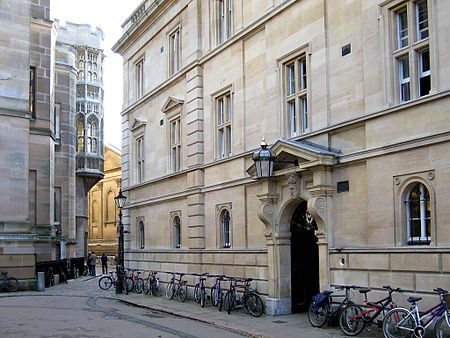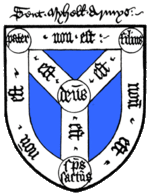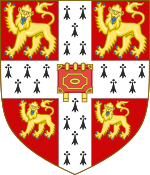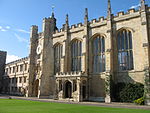Trinity Lane

Trinity Lane is a street in the centre of Cambridge, England that passes through portions of the University of Cambridge, one of the world's most prestigious universities. The lane leads off Trinity Street. At the entrance to the lane from Trinity Street as it leads west, Trinity College is located on the north side of the lane, including Nevile's Gate, and Gonville and Caius College is on the south side. The lane then turns south around the back of Gonville and Caius. Here, Trinity Hall is to the west. At the end of the lane is Clare College to the west and King's College with its huge Chapel blocking the way to the south. Here the Old Schools are also to be found to the east and beyond that the University of Cambridge Senate House where degree ceremonies are held, on King's Parade. The Old Schools now house the Cambridge University Offices, which form the main administration for the University.Senate House Passage is a pedestrian passageway that links from near the end of Trinity Lane back to Trinity Street. Gonville and Caius College is to the north and the Senate House is to the south.
Excerpt from the Wikipedia article Trinity Lane (License: CC BY-SA 3.0, Authors, Images).Trinity Lane
Trinity Lane, Cambridge Newnham
Geographical coordinates (GPS) Address Nearby Places Show on map
Geographical coordinates (GPS)
| Latitude | Longitude |
|---|---|
| N 52.2064 ° | E 0.1165 ° |
Address
Master's Lodge, Hall and Buttery
Trinity Lane 1
CB2 1SU Cambridge, Newnham
England, United Kingdom
Open on Google Maps










